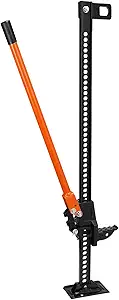












 4
4






- Tim's Homestead Journal - Purchase a copy of Building a Better World in Your Backyard - Purchase 6 Decks of Permaculture Cards -
- Purchase 12x Decks of Permaculture Cards - Purchase a copy of the SKIP Book - Purchase 12x copies of Building a Better World in your Backyard
 12
12




If there is one thing the Wizard of Oz has taught me, it is not to trust school teachers on bicycles.
 14
14
















 6
6




John F Dean wrote:jacking up decks for repair
 9
9








 12
12




For all your Montana Masonry Heater parts (also known as) Rocket Mass heater parts.
Visit me at
dragontechrmh.com Once you go brick you will never go back!
 8
8




thomas rubino wrote:I have owned one for years, it does collect dust but, when you need one you are glad to have it.
“The most important decision we make is whether we believe we live in a friendly or hostile universe.”― Albert Einstein
 14
14





 12
12




Our inability to change everything should not stop us from changing what we can.












 10
10




- Tim's Homestead Journal - Purchase a copy of Building a Better World in Your Backyard - Purchase 6 Decks of Permaculture Cards -
- Purchase 12x Decks of Permaculture Cards - Purchase a copy of the SKIP Book - Purchase 12x copies of Building a Better World in your Backyard
 10
10




If there is one thing the Wizard of Oz has taught me, it is not to trust school teachers on bicycles.
 9
9




Trees are our friends

 7
7




Our inability to change everything should not stop us from changing what we can.
 10
10
















 8
8





- Tim's Homestead Journal - Purchase a copy of Building a Better World in Your Backyard - Purchase 6 Decks of Permaculture Cards -
- Purchase 12x Decks of Permaculture Cards - Purchase a copy of the SKIP Book - Purchase 12x copies of Building a Better World in your Backyard












 5
5




- Tim's Homestead Journal - Purchase a copy of Building a Better World in Your Backyard - Purchase 6 Decks of Permaculture Cards -
- Purchase 12x Decks of Permaculture Cards - Purchase a copy of the SKIP Book - Purchase 12x copies of Building a Better World in your Backyard
 5
5




If there is one thing the Wizard of Oz has taught me, it is not to trust school teachers on bicycles.
 7
7




Timothy Norton wrote:Now I have a new question.
Part of utilizing the jack requires a chain. I'm planning on getting a 3/8 chain with hooks rated just shy of the jacks lifting capacity. While I don't plan on using the jack anywhere near the load rating of the chain it brings up a new question.
Is it better to have a chain that is rated HIGHER than the High Lift Jack so if it is overwhelmed the shear pin goes in it or have the chain fail? I'm thinking shear pin.... maybe I am overthinking the risk?

|
Anderson gave himself the promotion. So I gave myself this tiny ad:
The new permaculture playing cards kickstarter is now live!
https://www.kickstarter.com/projects/paulwheaton/garden-cards
|




.jpg)


